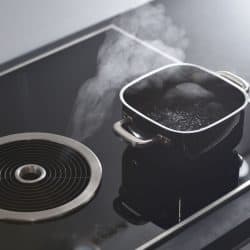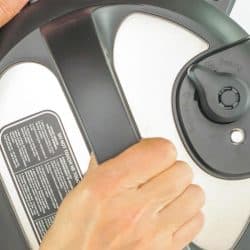Pressure cookers are amazing gadgets that allow you to harness the power of steam pressure to cook food quickly while locking in moisture and nutrients. But can they be used on electric stovetops, and, if so, how? Well, we've researched this topic thoroughly, and here's what you need to know.
Yes, you can use a pressure cooker on an electric stove. However, you will need to use a little extra care and two burners. Otherwise, the process is the same for gas ranges. To do this:
- Place your pressure cooker over medium-high heat on one burner.
- Once pressure is reached, move your pot over to a second burner.
- Preheat the second burner using low/medium heat to maintain pressure.
- Allow your pressure cooker to depressurize, and you're ready to eat!
Of course, there are other precautions you'll want to take to protect your electric stove, especially if it is a glass cooktop. In this article, we'll cover those tips and more about pressure cooking. We'll also dive into the world of pressure canning. Read on to get the whole story.
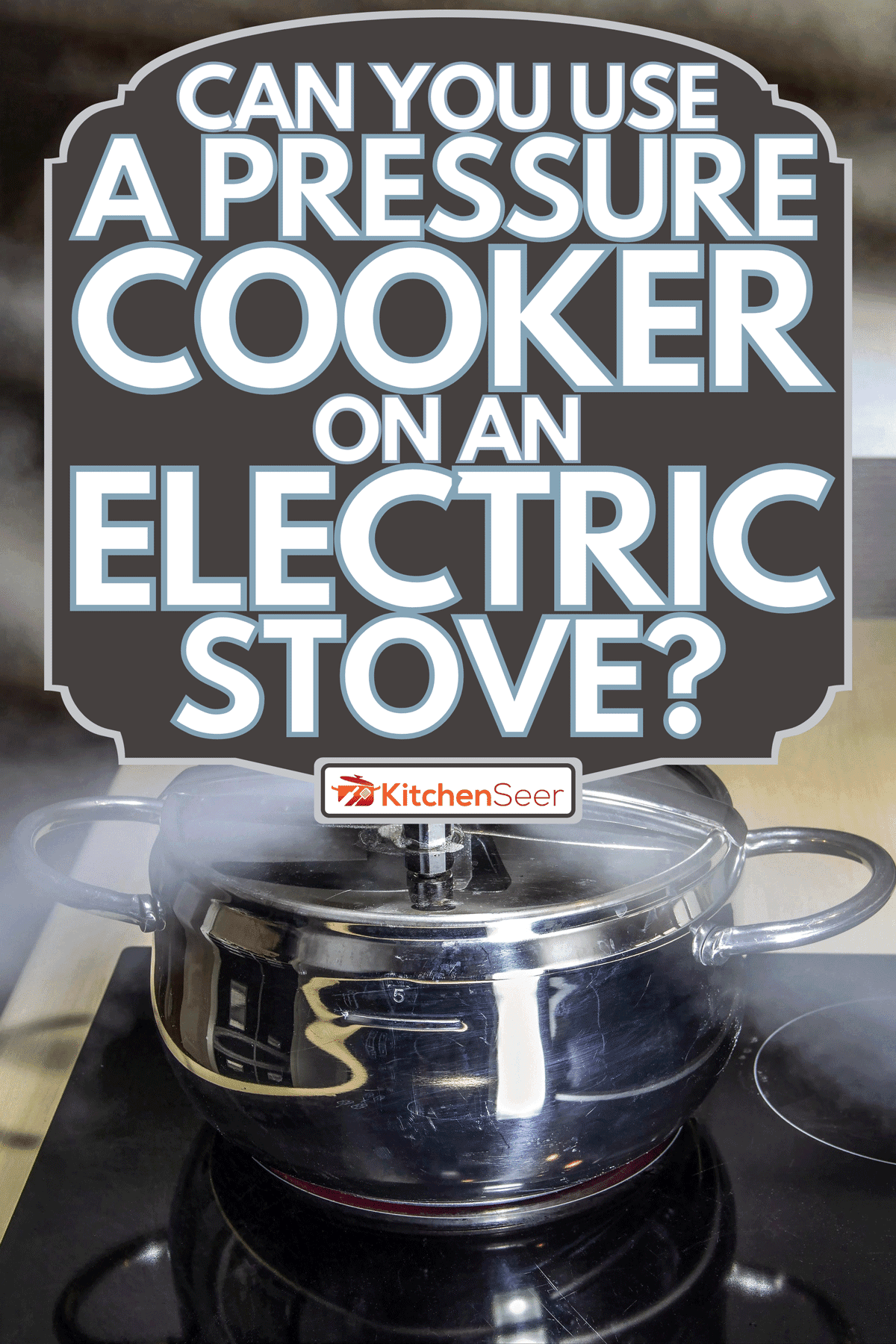
Can You Use A Pressure Cooker On A Glass Top Stove?
Glass-top stoves, also known as ceramic or smooth-top stoves, are safe for pressure cookers if you follow the necessary precautions. Because glass is a poor conductor of heat, glass-top stoves do not respond quickly to changes in temperatures, making them volatile to pressure cooking.
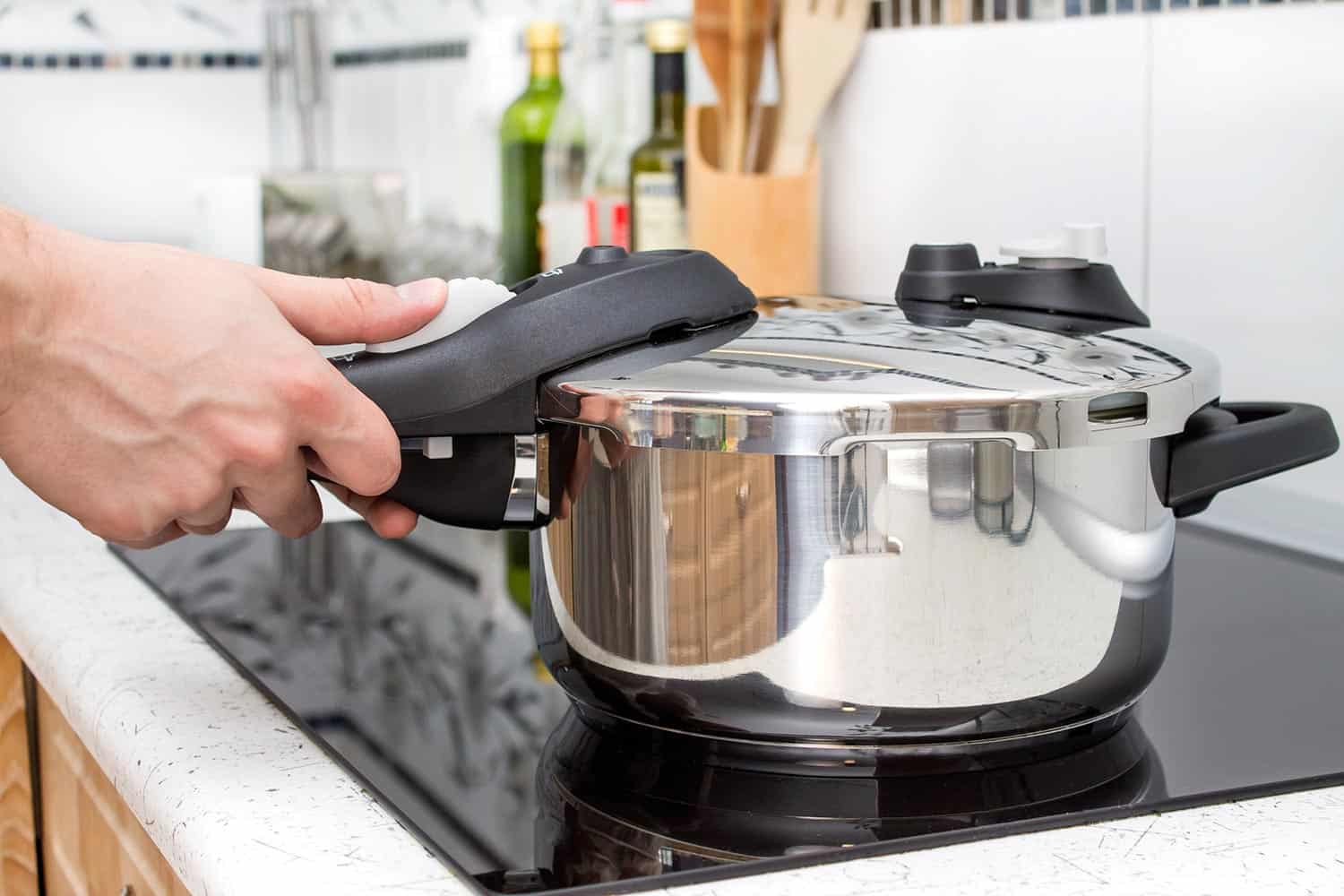
That said, to reach pressure, the glass cooktop will need to get quite hot. Due to its poor conduction and relatively high thermal mass, the glass will remain hot after the heat setting has been reduced or turned off. Because of this, if you were to leave the pressure cooker on the same burner, the food inside would likely overcook.
As we covered above, it's a good idea to use a second burner for post-cooking heating to keep your food and glass stovetop safe.
By doing this, you can reduce the heat enough to avoid overcooking your food or building up too much pressure. By preheating the burner, you'll also avoid letting the heat and, consequently, pressure drop too low.
This method may take some trial and error to find the correct settings for your particular stovetop. Be sure to monitor your pressure indicator. If it drops, you'll need more heat to maintain pressure. If it begins to whistle or bubble, you will need to reduce the temperature.
Other Precautions For Gas Stoves
We've covered the general method for using a pressure cooker on a gas top stove, but there are other precautions you'll want to consider.
The first is to avoid aluminum pressure cookers. Aluminum pressure cookers require more care than stainless steel and are prone to leaving residue behind on glass-top stoves.
Opt instead for a stainless steel pressure cooker, like the one below from T-fal.
Follow this link to view it on Amazon.
Avoid sliding your pressure cooker on a glass-top stove as with other cookware. This can scratch the smooth surface, leaving marks and making it harder to clean. Instead, always move your pressure cooker directly up and down when placing and removing it from the stove.
Can You Use A Pressure Cooker On An Induction Stove?
Induction stovetops are an excellent choice for pressure cooking. Unlike coil or glass-top stoves, induction stovetops respond quickly to changes in the heat settings. Because of this, you can use the pressure cooker on a single burner, the same as you would on a gas range.
It is crucial not to use an aluminum pressure cooker with induction stoves. Because aluminum is non-magnetic, pure aluminum cookware will not heat up on an induction stove. However, stainless steel cookware that uses an aluminum core can generally be used on an induction cooktop.
What Is The Best Stove For Pressure Canning?
While one can pressure cook on most stovetops following the proper methodology, pressure canning is more complicated. You have to consider the shape, size, and weight of your pressure canner, including its contents, as well as the size of your burners and your stove's ability to maintain the needed temperatures.
If you ask around among canning connoisseurs, they will likely tell you the same thing: gas is best for pressure canning. There are several reasons for this.
Electric stovetops, with their cycling heat systems and flat surfaces, struggle to reach the demands of pressure canning. Even if you can maintain the correct heat and pressure, it will require constant monitoring of your stove.
Glass-top stoves can also be at risk when you place a pressure canner on top of them because of their extreme weight. Considering that glass stovetops are usually rated for 50 pounds or less, a pressure canner isn't always the best choice.
Unfortunately, with the combined weight of the canner, the water, the glass jars, and the food itself, you are likely to exceed that weight when using a pressure canner.
If you already have an electric cooktop, one option you can consider is getting a portable gas stove. These can make the canning process easier and are great for outdoor cooking/power outages.
Camp Chef makes outdoor gas stoves that have been tried and tested with outdoor canners, including the one below.
See this outdoor gas stove on Amazon.
You can also see an older version of this stove pressure canning and get more pressure canning advice in this video from the Guildbrook Farms YouTube channel below.
Can You Use A Pressure Canner On An Electric Stove?
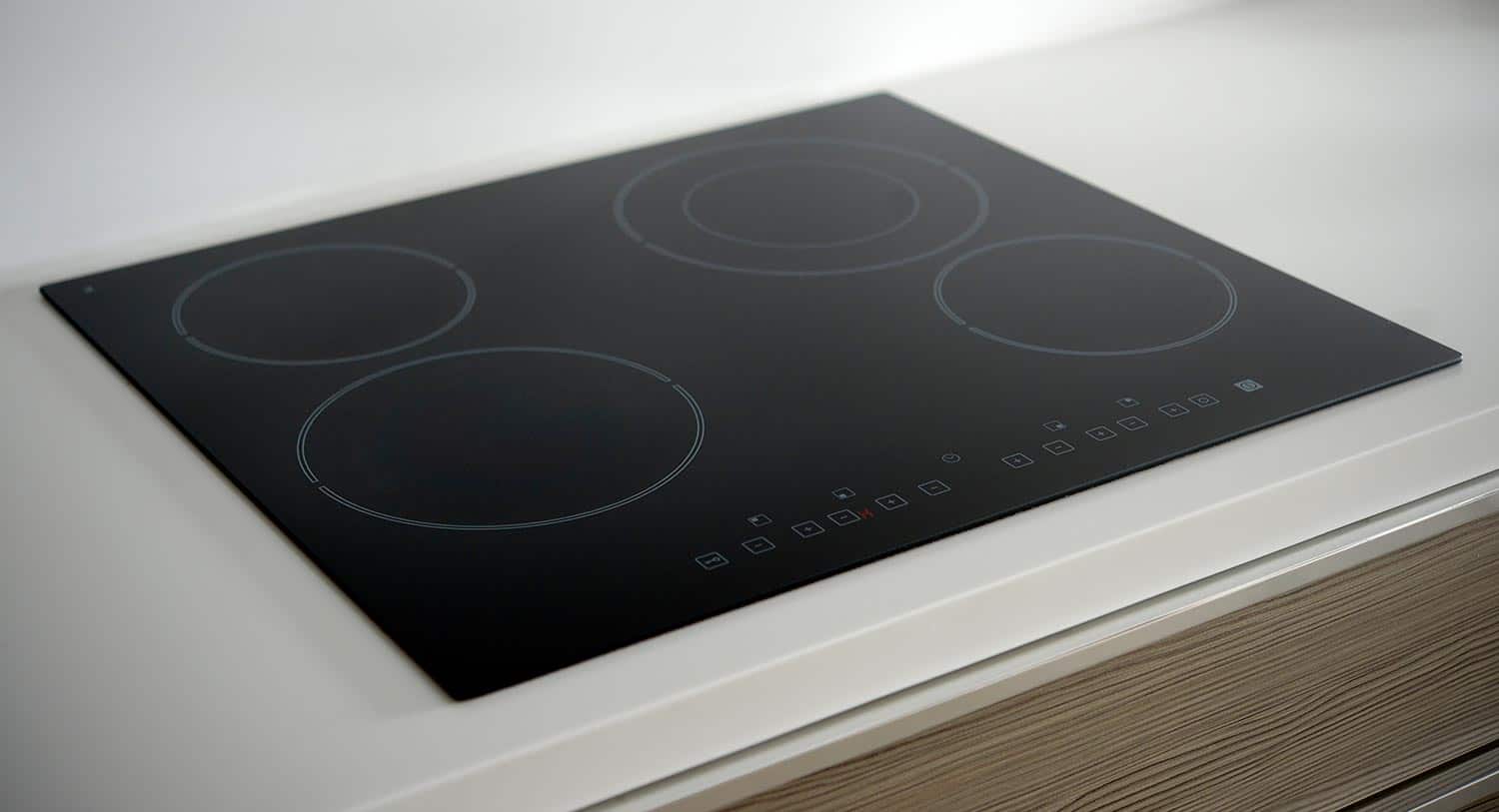
If you don't want to invest in a supplemental gas cooktop, there may still be options for you to use a pressure canner on your electric stove. That said, we do recommend following these guidelines first:
Check With The Manufacturer
Before you do anything else, you should contact your stove's manufacturer. Ask them directly if it's possible to pressure can on your cooktop. Often, the answer will be no.
The potential for damaging your stovetop or even contaminating your canned food is enough liability to make most manufacturers advise against pressure canning.
However, if they say yes, there are still some precautions to consider. Most importantly, you should find out the limits of your cooktop.
Find Your Stove's Weight And Temperature Limits
If your stove is a coil-top, you'll need to know the weight limit for the coil you will use for canning. For glass-top stoves, you'll need to know the overall weight limit of the stove as well as the temperature limit.
Generally, most modern glass-top stoves can withstand the temperatures reached by pressure canners (240º F), but some older models can't.
You should be able to find this information in your owner's manual. However, since you will already be contacting the manufacturer, you can also inquire about these limits simultaneously.
Reduce The Size Of Your Pressure Canner
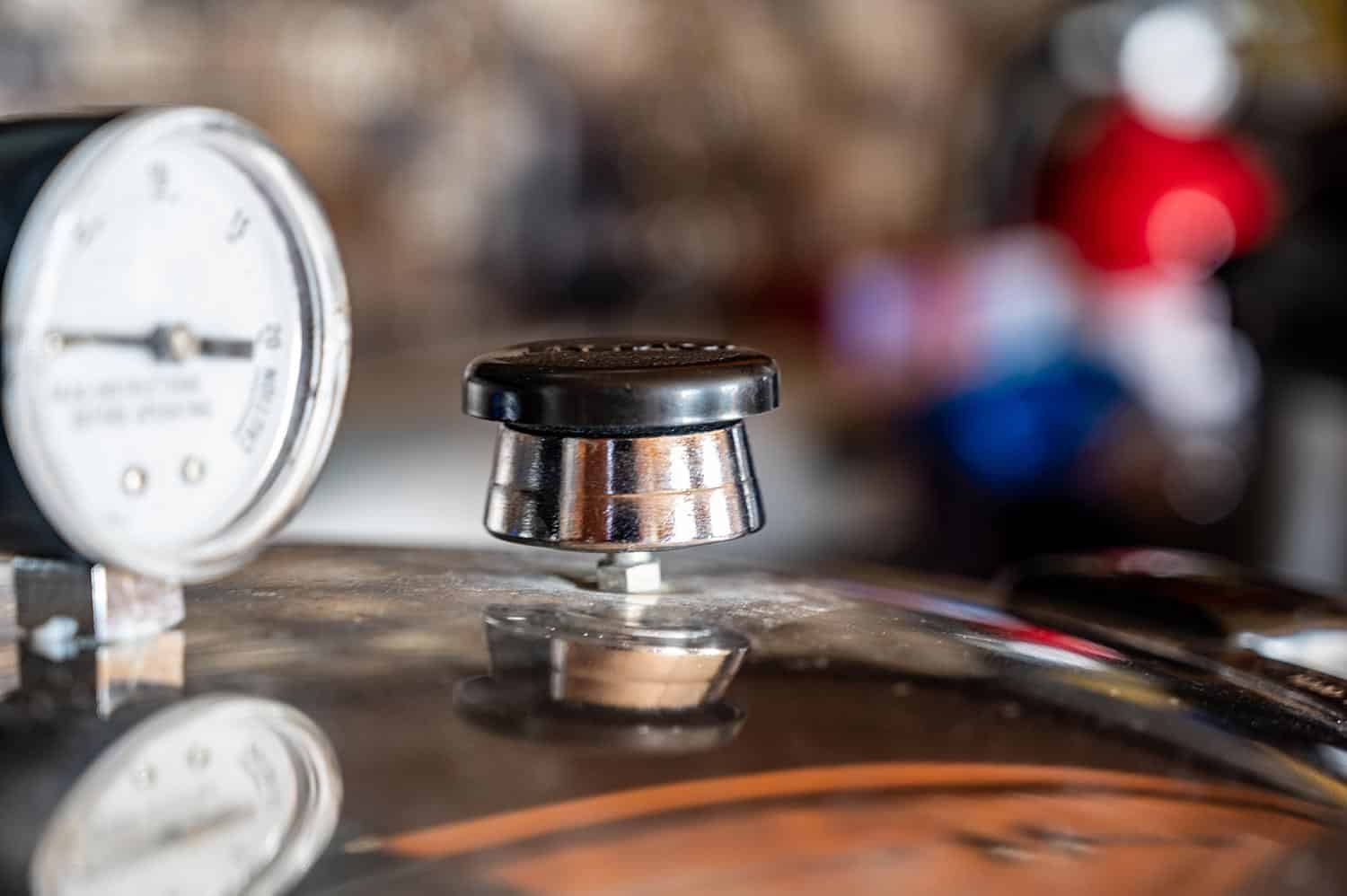
You will want a canner that does not extend beyond more than an inch the dimensions of the burner itself. This means opting for one with a smaller diameter. To be safe on your weight limits, you'll want to consider a lighter canner as well.
If you have a coil-top stove, you may want to consider an aluminum option. These will be lighter and more affordable than their stainless steel counterparts.
The 16-quart pressure canner from Presto, shown below, weighs just 10.5 pounds, making it a safer option.
Check out this pressure canner on Amazon.
Furthermore, glass cooktops usually have lower weight limits but will also need stainless-steel pressure canners to avoid residue (or to heat up at all, in the case of induction burners).
To solve this problem, look for aluminum pressure canners with stainless steel bases, like this 12-pound model below.
View this pressure canner on Amazon.
Can You Use A Pressure Cooker For Canning?
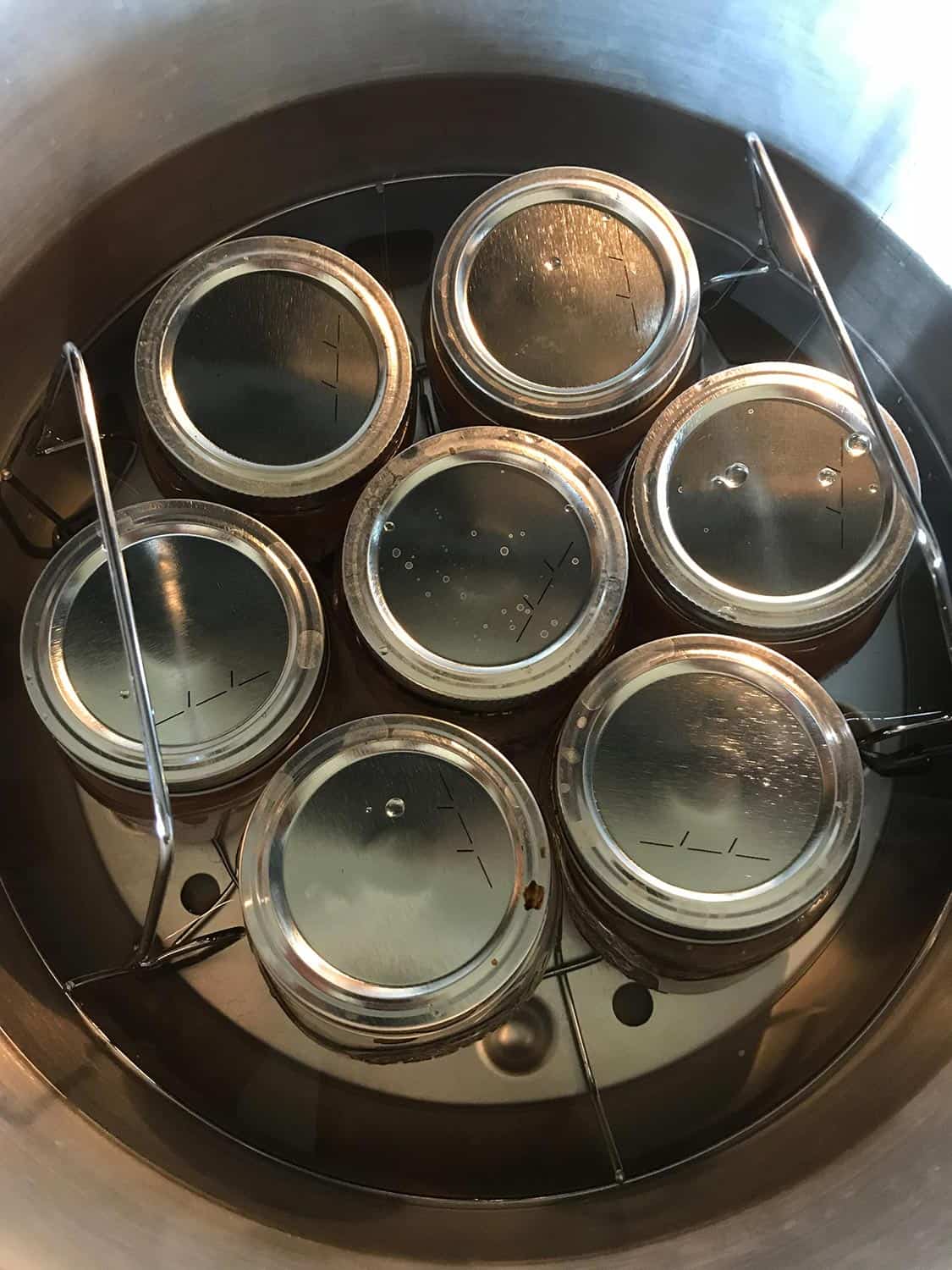
Pressure cookers and, especially, pressure canners can run pretty large. It's certainly tempting to cut down on kitchen clutter by doing both with a single pot. But is this advisable?
You should only use a pressure cooker for canning if it's specifically designed for both purposes. Using a pressure cooker can lead to your canned products being under-processed and, hence, dangerous.
Pressure canners also tend to be larger than pressure cookers. This extra space isn't just to accommodate your jars. It also increases the time it takes to heat up and cool down the contents, which is essential for safe canning.
Pressure canners will also have pressure gauges. The specific amount of pressure you need will be determined by the food you are canning and your altitude. Since pressure cookers usually lack these gauges, controlling the particular pressure inside the pot is more challenging.
In Closing
With a bit of planning, the right methods/materials, and the necessary know-how, you'll be ready to use a pressure cooker in no time. From what we found, it's essential to check your stovetop's weight rating before placing down a pressure cooker to prevent it from getting damaged.
It's also a good idea to use two burners when making food on an electric stove to keep your surface from overheating. On top of that, you'll also want to follow many precautions when using a pressure canner, so keep that in mind.
Of course, remember to reach out to your stovetop's manufacturer with any questions, and don't be afraid to find a pressure cooker and canner hybrid to save some space!





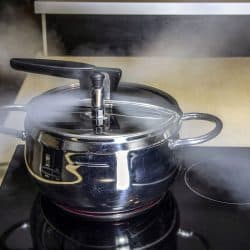
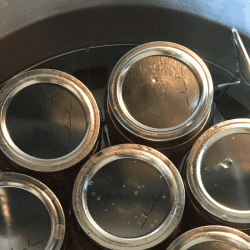
![High pressure aluminum cooking pot with safety cover, 6 Types of Pressure Cookers [And The Pros And Cons Of Each]](https://kitchenseer.com/wp-content/uploads/2022/02/High-pressure-aluminum-cooking-pot-with-safety-cover-1-250x250.jpg)
